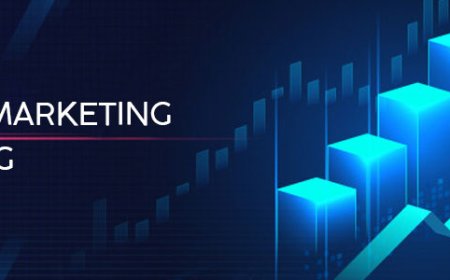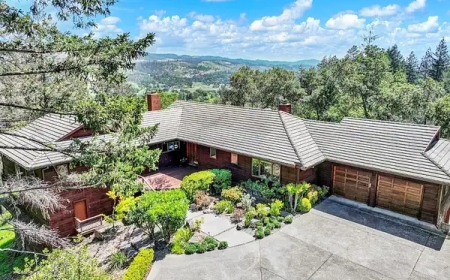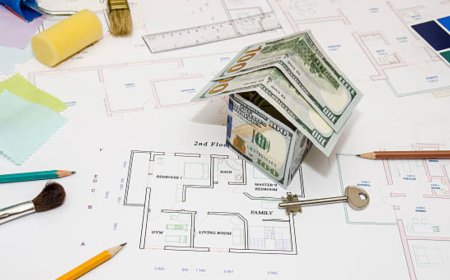Crypto Mining Machine – XRP or Solana: Which Will Surge First?
Explore the future of crypto mining machine tech and trends as we analyze XRP versus Solana price prediction 2030 in detail.

Cryptocurrency is no longer a niche marketits a global phenomenon capturing the attention of investors, tech enthusiasts, and everyday people looking for new ways to grow wealth. As we head toward 2030, all eyes are on two standout digital assets: XRP and Solana. Both coins have battled for dominance in market adoption and growth potential. But the real question is, which one will surge first?
Beyond price speculation, one overlooked aspect is the role of the crypto mining machine in powering this revolution. While mining models have evolved and shifted over the years, the right technology remains essential in maximizing returns and supporting blockchain networks. This article dives into the mining side of things, compares the rising potential of XRP and Solana, and offers insight into which may emerge stronger by 2030.
The Evolution of the Crypto Mining Machine
The landscape of cryptocurrency mining has changed dramatically since Bitcoin's early days. A crypto mining machine today is smarter, faster, and more energy-efficient. Whether you're using ASIC miners, compact rigs, or exploring GPU setups for altcoins, the goal remains the same: solve complex algorithms to validate transactions and earn rewards.
In the case of XRP and Solana, the role of mining is more nuanced. XRP does not require traditional mining, as it operates on a consensus protocol that doesnt demand intensive computing. Solana, on the other hand, utilizes a combination of Proof-of-History and Proof-of-Stake. While not entirely reliant on mining machines, the infrastructure still benefits from high-performance nodes, staking validators, and optimized hardware.
This raises an important point: is investing in a crypto mining machine still worth it if leading altcoins are shifting to more efficient models?
XRP: Focused on Speed and Utility
XRPs core value proposition lies in its ability to facilitate fast and low-cost cross-border payments. Its success has always hinged on utility rather than mining potential. However, the decentralized infrastructure it builds around, including validator nodes, still involves computation and rewards that can resemble mining in an indirect sense.
While XRP lacks direct mining incentives, forward-thinking investors continue to look for indirect benefits through staking pools, running validators, or even investing in hardware that supports broader blockchain applications.
Solanas Scalable Architecture
Solana price prediction 2030 opens up an interesting conversation about speed, scalability, and real-world application. Solana has carved a space for itself as one of the fastest and most cost-effective blockchains in operation. The first line of strength? Its technology.
The Solana price prediction 2030 is largely influenced by its ability to handle thousands of transactions per second with minimal fees. This scalability gives Solana a real advantage for developers building apps, DeFi platforms, and NFT marketplaces. Investors who believe in the long-term rise of Solana often explore validator staking with powerful hardware setups that resemble traditional mining machines in architecture and performance needs.
Investing in Hardware That Powers Growth
Even if Solana and XRP arent traditionally mined like Bitcoin or Litecoin, the need for performance-focused systems remains. As the crypto world moves into validator-based consensus models, staking hardware, nodes, and even home-based mining-style setups are finding renewed importance.
Here are some practical use cases of modern crypto mining machine setups that are aligning with these trends:
-
Running validator nodes on scalable blockchains like Solana or Avalanche
-
Participating in distributed cloud computing systems that reward computational support
-
Hosting decentralized apps or storage solutions that yield passive income
This shows that miners dont necessarily need to abandon their rigs. Instead, they should adapt to new proof models and configure their setups for maximum participation in upcoming ecosystems.
XRP vs Solana: Which Will Surge First?
When determining which of these two giants might surge first by 2030, its essential to weigh their core strengths. XRP is focused, established, and gaining momentum from institutional players looking for efficient payments infrastructure. It has the benefit of being battle-tested and widely recognized across banking and fintech circles.
Solana, however, is the innovator. It supports smart contracts, DeFi, NFTs, and boasts lightning-fast transaction speeds. If adoption continues at the current rate and technological upgrades succeed in avoiding future downtime, Solana may have the edge.
But in the end, its not just about price movement its also about infrastructure, demand, and the tools supporting each ecosystem. The rise of the crypto mining machine remains critical here, even as the definition of mining evolves in a staking-dominated world.
Key Takeaways for Investors
For anyone considering diving into XRP or Solana with hardware involvement, here are some final thoughts to consider:
-
Understand the Ecosystem: XRP may not be mineable, but running validators or working with supported ledgers still provides opportunities. Solana has hardware-driven validator roles that resemble mining setups in function.
-
Upgrade Your Tech: Dont rely on outdated rigs. Explore energy-efficient crypto mining machine options that are compatible with newer staking and validating protocols.
-
Stay Adaptive: Crypto is moving fast. Machines that were once essential for Bitcoin mining may now be repurposed for blockchain data centers or decentralized web support.
-
Do Your Research: Before committing to either asset, make sure to evaluate the long-term viability of its ecosystem. Trends, adoption rates, and use-case expansion should be at the center of any decision.
Conclusion
As we move closer to 2030, the crypto world continues to evolve at a staggering pace. For investors, miners, and enthusiasts, understanding where the real opportunities lie is more important than ever. While XRP and Solana follow different technological paths, both are influential in shaping blockchains future.
From a mining perspective, Solana may present more hardware-friendly opportunities through its validator structure. XRP, meanwhile, remains a key player in digital finance with its streamlined consensus model. As price predictions and adoption trends unfold, being equipped with the right crypto mining machine could still offer a competitive edge in both ecosystems.
Whether you're drawn by speed and innovation or utility and adoption, staying updated on staking trends, validator technology, and the broader hardware landscape will be essential for success. The Solana price prediction 2030 hints at a promising future, but so does the resilient rise of XRP. One thing is clearadaptable miners and investors will be the real winners.































